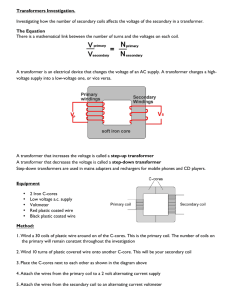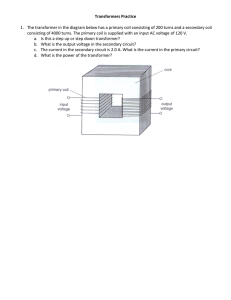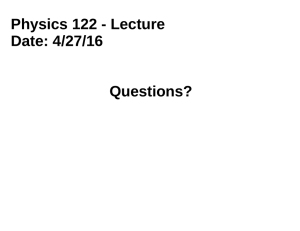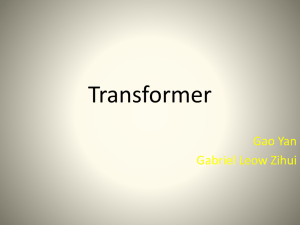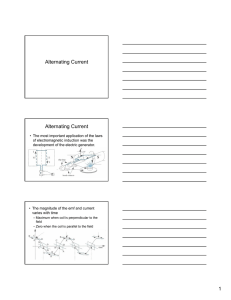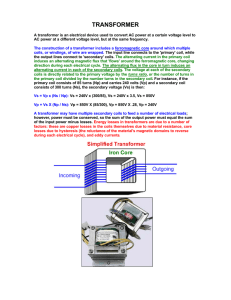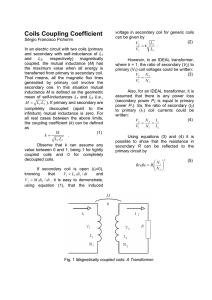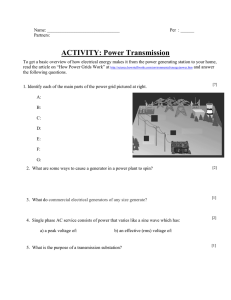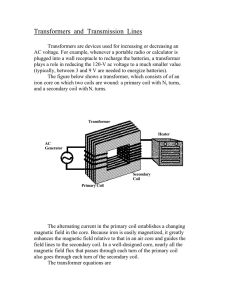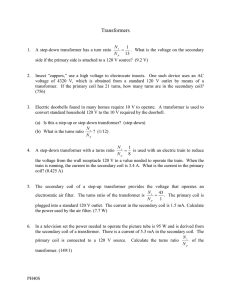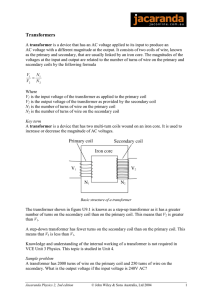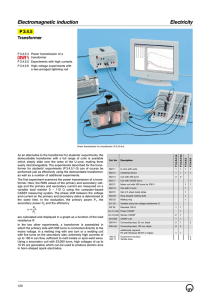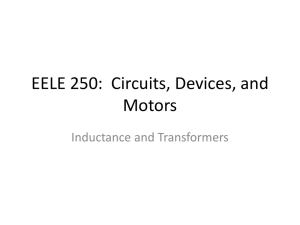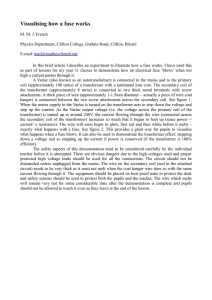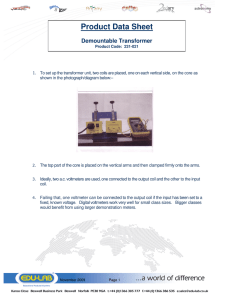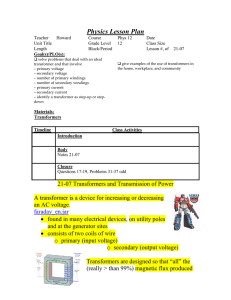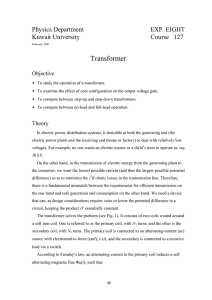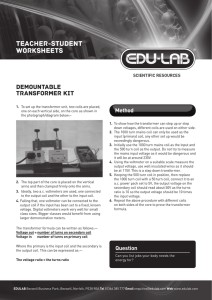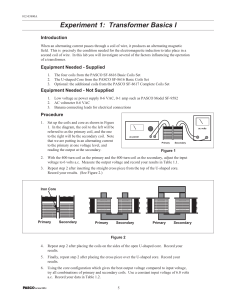Transfromer basics
advertisement
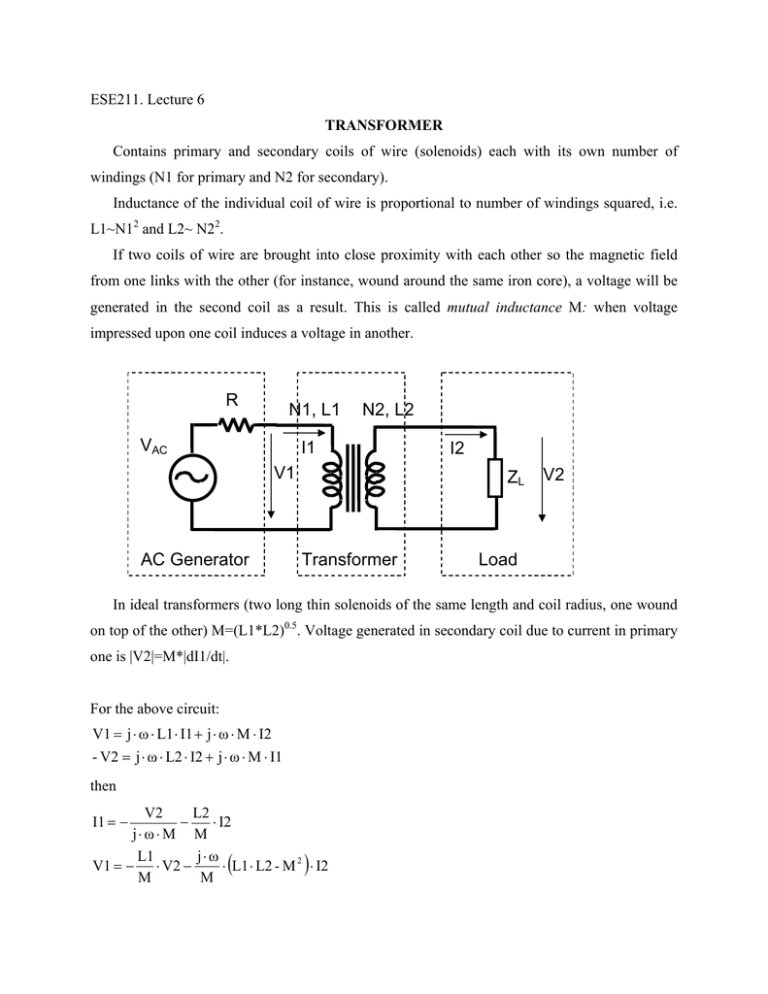
ESE211. Lecture 6 TRANSFORMER Contains primary and secondary coils of wire (solenoids) each with its own number of windings (N1 for primary and N2 for secondary). Inductance of the individual coil of wire is proportional to number of windings squared, i.e. L1~N12 and L2~ N22. If two coils of wire are brought into close proximity with each other so the magnetic field from one links with the other (for instance, wound around the same iron core), a voltage will be generated in the second coil as a result. This is called mutual inductance M: when voltage impressed upon one coil induces a voltage in another. R N1, L1 VAC N2, L2 I1 V1 AC Generator I2 ZL Transformer V2 Load In ideal transformers (two long thin solenoids of the same length and coil radius, one wound on top of the other) M=(L1*L2)0.5. Voltage generated in secondary coil due to current in primary one is |V2|=M*|dI1/dt|. For the above circuit: V1 = j ⋅ ω ⋅ L1 ⋅ I1 + j ⋅ ω ⋅ M ⋅ I2 - V2 = j ⋅ ω ⋅ L2 ⋅ I2 + j ⋅ ω ⋅ M ⋅ I1 then V2 L2 − ⋅ I2 j⋅ ω ⋅ M M L1 j⋅ ω V1 = − ⋅ V2 − ⋅ L1 ⋅ L2 - M 2 ⋅ I2 M M I1 = − ( ) For ideal transformer, i.e. M=(L1*L2)0.5 and L1 is very large (so we can neglect V1/L1). L1 N1 ⋅ V2 = ⋅ V2 L2 N2 N2 I1 = ⋅ I2 N1 P2 = I2 ⋅ V2 = P1 = I1 ⋅ V1 V1 = A transformer designed to output more voltage than it takes in across the input coil is called a "step-up" transformer (N2>N1), while one designed to do the opposite is called a "step-down" (N2<N1), in reference to the transformation of voltage that takes place. The current through each respective coil, of course, follows the exact opposite proportion. Ideal transformer delivers power to the load with no loss so the P2=P1. N1 2 ⋅ V2 V1 N2 ⎛ N1 ⎞ Impedance as seen by AC generator is Z = = =⎜ ⎟ ⋅ ZL N2 I1 N2 ⎠ ⎝ ⋅ I2 N1

